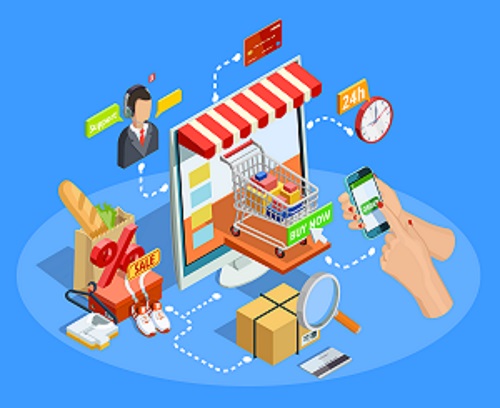The Middle East is undergoing rapid digital transformation, with businesses leveraging technology to enhance customer experiences, streamline operations, and boost revenue. Mobile applications have become a key driver of this transformation, enabling companies to stay competitive in an evolving digital landscape.
But is custom mobile app development worth the investment in the Middle East? Given the region’s growing smartphone penetration, government-led digital initiatives, and consumer demand for mobile-first solutions, the answer is a resounding yes. Businesses looking to scale must consider the advantages of investing in custom mobile apps over off-the-shelf solutions.
In this article, we’ll explore the benefits of custom mobile app development, how it drives business success, and why partnering with a mobile app development company is crucial for long-term growth.
1. The Growing Demand for Mobile Apps in the Middle East
The Middle East is witnessing a surge in mobile app usage across various industries, including retail, finance, healthcare, real estate, and tourism. Some key trends fueling this growth include:
- High Smartphone Penetration: Countries like the UAE and Saudi Arabia have some of the highest smartphone adoption rates globally, with over 90% of the population using mobile devices.
- Government-Led Digital Transformation: Initiatives such as Saudi Vision 2030 and Dubai’s Smart City strategy are accelerating the adoption of mobile technologies.
- Rising E-Commerce and Fintech Growth: The shift toward online shopping and digital payments is driving demand for seamless and secure mobile experiences.
Businesses that fail to invest in mobile technology risk losing their competitive edge. This is where custom mobile app development comes in, offering tailored solutions that align with unique business needs.
2. What Is Custom Mobile App Development?
Custom mobile app development involves creating a unique, tailor-made application that meets specific business requirements, rather than using a pre-built, off-the-shelf solution. Unlike generic apps, custom mobile applications provide:
- Personalized User Experience: Designed specifically for the target audience, ensuring higher engagement and customer satisfaction.
- Scalability & Flexibility: Built to grow with the business, allowing for future enhancements and feature additions.
- Advanced Security & Compliance: Tailored security measures to protect user data and comply with local regulations.
- Seamless Integration: Easily integrates with existing business systems, including CRM, ERP, and payment gateways.
With these advantages, businesses in the Middle East can deliver a superior mobile experience, setting them apart from competitors.
3. Key Benefits of Investing in Custom Mobile Apps
A. Competitive Advantage in the Market
A custom-built mobile app helps businesses stand out by offering exclusive features and personalized experiences. Whether it’s an e-commerce app with AI-driven recommendations or a fintech app with real-time analytics, customization allows businesses to create unique value propositions.
B. Enhanced Customer Engagement and Loyalty
Mobile apps enable businesses to build direct relationships with customers through push notifications, loyalty programs, and personalized content. By leveraging data insights, companies can deliver targeted promotions and enhance customer retention.
C. Increased Revenue Opportunities
Custom mobile apps unlock multiple monetization channels, including:
- E-commerce and In-App Purchases: Retailers and brands can boost sales by offering seamless mobile shopping experiences.
- Subscription Models: Businesses can generate recurring revenue by offering premium content or exclusive features.
- Advertising and Partnerships: Apps with high user engagement can monetize through in-app ads and strategic partnerships.
D. Improved Operational Efficiency
Custom mobile apps streamline business processes by automating tasks, reducing paperwork, and enhancing team collaboration. Industries like logistics, healthcare, and real estate benefit from apps that optimize workflow management and real-time communication.
E. Data-Driven Decision Making
A custom app provides valuable insights into customer behavior, preferences, and trends. Businesses can leverage analytics to refine their strategies, improve user experiences, and drive better ROI.
4. Industries Benefiting from Custom Mobile Apps in the Middle East
A. Retail & E-Commerce
With platforms like Noon, Amazon UAE, and Namshi gaining traction, e-commerce businesses are investing in custom mobile apps to offer smooth checkout experiences, AI-driven recommendations, and secure payment gateways.
B. Finance & Fintech
Mobile banking and digital payment solutions are rapidly growing in the Middle East. Banks and fintech startups are adopting custom apps to provide online transactions, peer-to-peer payments, and AI-powered financial management.
C. Healthcare & Telemedicine
Telehealth services have seen a major boost, especially post-pandemic. Custom apps allow patients to book consultations, access medical records, and receive remote healthcare services.
D. Real Estate & Property Management
Mobile apps simplify property searches, virtual tours, and real-time chat with agents, making property transactions more efficient for both buyers and sellers.
E. Travel & Tourism
Tourism-based businesses are developing mobile apps for seamless bookings, digital itineraries, and augmented reality (AR) travel guides to enhance the customer experience.
5. Cost vs. Value: Is Custom Mobile App Development Worth It?
Many businesses hesitate to invest in custom mobile app development due to concerns about cost. While developing a custom app requires a higher upfront investment compared to off-the-shelf solutions, the long-term benefits outweigh the initial expense.
Cost Factors in Custom Mobile App Development
- App Complexity & Features: The more features, integrations, and security layers required, the higher the cost.
- Platform Choice: Developing for iOS, Android, or both influences the overall budget.
- Development Time: Custom apps take longer to build than ready-made solutions, but they deliver a tailored experience.
Why It’s a Smart Investment
- Higher ROI: Custom apps lead to increased user engagement, higher conversions, and long-term customer retention.
- Brand Loyalty & Recognition: A unique app builds a strong brand presence in the market.
- Scalability: Unlike generic apps, a custom app grows with your business, avoiding the need for frequent replacements.
For businesses serious about long-term digital success, investing in a mobile app development company that specializes in custom solutions is the best approach.
6. Choosing the Right Mobile App Development Partner
To maximize the value of your investment, selecting the right development company is crucial. Here’s what to consider:
- Industry Experience: Look for a company with expertise in your business sector.
- Proven Portfolio: Check their past projects and case studies.
- Technical Expertise: Ensure they use the latest technologies (AI, blockchain, cloud computing).
- Ongoing Support & Maintenance: A good partner provides post-launch support and updates.
7. Conclusion
Custom mobile app development is more than just a trend in the Middle East—it’s a necessity for businesses looking to grow, innovate, and stay competitive. With the region’s rapid digital adoption, investing in a tailored mobile solution offers significant advantages, from enhanced customer engagement to increased revenue.
For businesses looking to develop a cutting-edge mobile app, partnering with a reputable mobile app development company in Saudi can ensure a seamless development process, expert guidance, and a scalable solution that drives long-term success.



